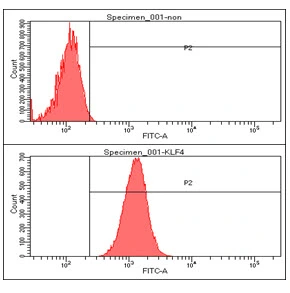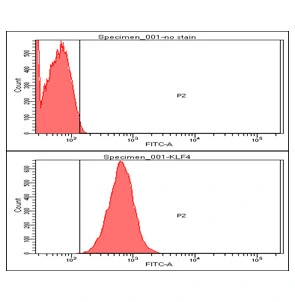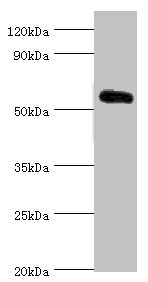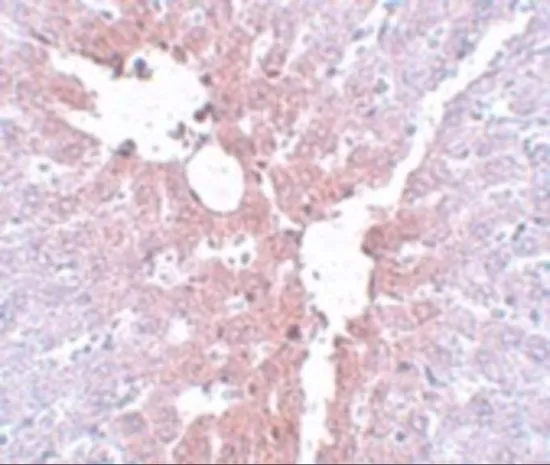
FACS analysis of A549 cells using GTX57568 KLF4 antibody. Cell Number: 1 x 10? cells Primary antibody: Red line Antibody amount: 2-5 microg
KLF4 antibody [AT4E6]
GTX57568
ApplicationsFlow Cytometry, Western Blot
Product group Antibodies
TargetKLF4
Overview
- SupplierGeneTex
- Product NameKLF4 antibody [AT4E6]
- Delivery Days Customer9
- Application Supplier NoteWB: 1:1000-1:2000. *Optimal dilutions/concentrations should be determined by the researcher.Not tested in other applications.
- ApplicationsFlow Cytometry, Western Blot
- CertificationResearch Use Only
- ClonalityMonoclonal
- Clone IDAT4E6
- Concentration1 mg/ml
- ConjugateUnconjugated
- Gene ID9314
- Target nameKLF4
- Target descriptionKLF transcription factor 4
- Target synonymsEZF, GKLF, Krueppel-like factor 4, Kruppel like factor 4, Kruppel-like factor 4 (gut), endothelial Kruppel-like zinc finger protein, epithelial zinc finger protein EZF, gut Kruppel-like factor, gut-enriched krueppel-like factor
- HostMouse
- IsotypeIgG1
- Protein IDO43474
- Protein NameKrueppel-like factor 4
- Scientific DescriptionThis gene encodes a protein that belongs to the Kruppel family of transcription factors. The encoded zinc finger protein is required for normal development of the barrier function of skin. The encoded protein is thought to control the G1-to-S transition of the cell cycle following DNA damage by mediating the tumor suppressor gene p53. Mice lacking this gene have a normal appearance but lose weight rapidly, and die shortly after birth due to fluid evaporation resulting from compromised epidermal barrier function. Alternative splicing results in multiple transcript variants encoding different isoforms. [provided by RefSeq, Sep 2015]
- Storage Instruction-20°C or -80°C,2°C to 8°C
- UNSPSC12352203




![WB analysis of mouse liver tissue lysate in (A) the absence and (B) the presence of blocking peptide using GTX17300 KLF4 antibody [4G6E11]. Working concentration : 1 microg/ml](https://www.genetex.com/upload/website/prouct_img/normal/GTX17300/GTX17300_2438_WB_20180221_w_23060620_389.webp)
![WB analysis of mouse liver tissue lysate in (A) the absence and (B) the presence of blocking peptide using GTX17306 KLF4 antibody [4E5C3]. Working concentration : 1 microg/ml](https://www.genetex.com/upload/website/prouct_img/normal/GTX17306/GTX17306_2439_WB_20180221_w_23060620_579.webp)

![ICC/IF analysis of ECA109 cells using GTX82771 KLF4 antibody [1E6]. Green : KLF4 Red: Actin filaments](https://www.genetex.com/upload/website/prouct_img/normal/GTX82771/GTX82771_20170912_ICCIF_w_23061322_308.webp)
![IHC-P analysis of lung cancer tissue (left) and human rectum tissue (right) using GTX82798 KLF4 antibody [1E5].](https://www.genetex.com/upload/website/prouct_img/normal/GTX82798/GTX82798_20170912_IHC-P_w_23061322_543.webp)

